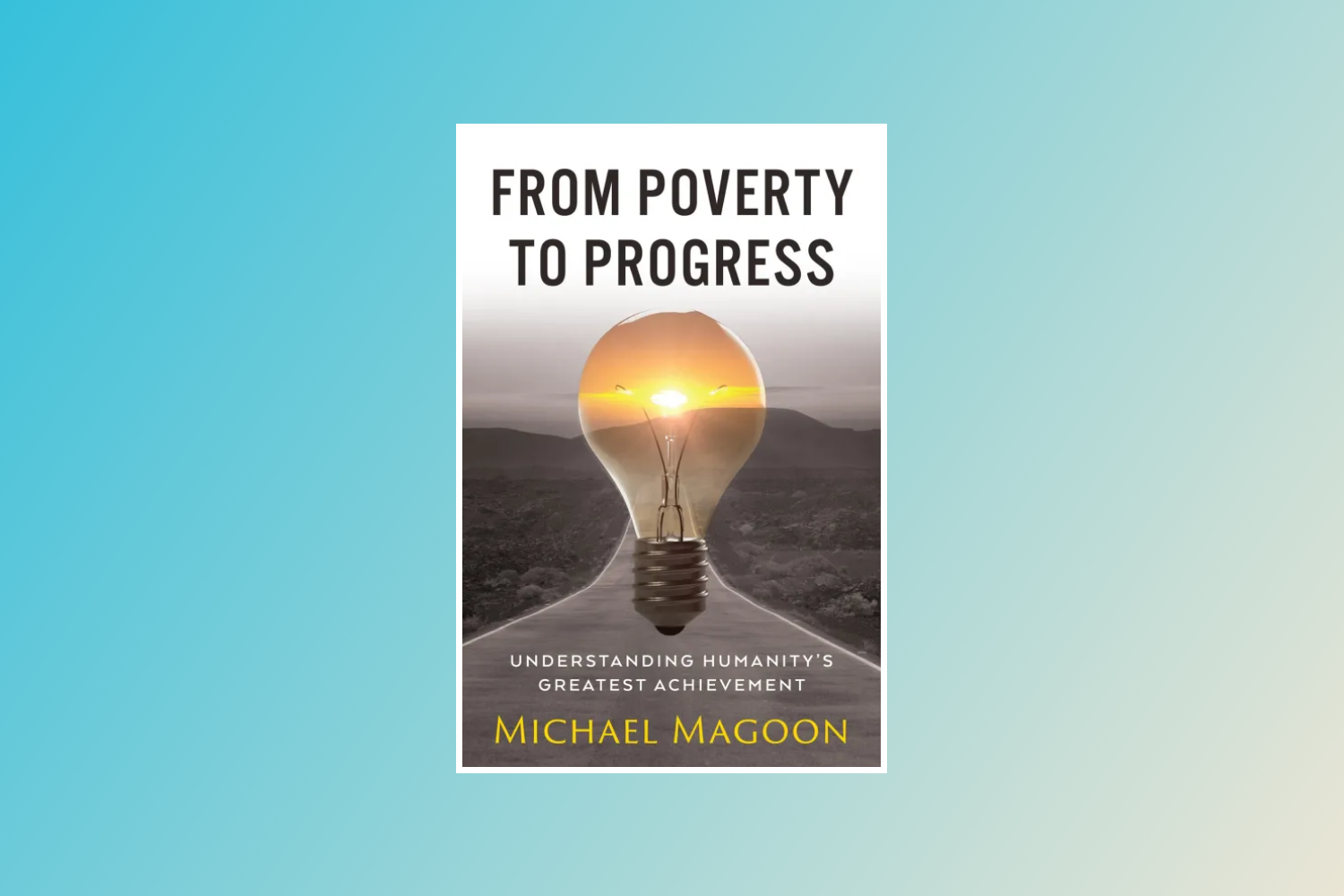Why isn’t everyone in dire poverty, hungry, diseased, illiterate, missing teeth, eking out a subsistence existence in the wilderness, and making do with Stone Age technology? After all, that’s how we started. Penury is the default state of humanity, as is a lack of technology. In fact, advanced technology and widespread prosperity are relatively recent innovations.
What has allowed all the progress we’ve experienced to date to take place? And what stands in the way of further advancement? In his valuable book, From Poverty to Progress: Understanding Humanity’s Greatest Achievement, Michael Magoon seeks to explain progress’s origins and enemies.
First, Magoon offers a sweeping overview of how the world has changed into a place where an increasing number of people enjoy prosperity, peace, advanced medicine, and other wonders of modern life. With graphs and data, Magoon demonstrates the historical and ongoing transformation of the human experience “from poverty to progress.” Magoon provides a valuable service in painstakingly recording the many ways in which our ancestors would envy modern life.
Magoon then explains the origins of the metamorphosis. He dispels popular but mistaken ideas about the roots of progress, such as the fallacy that progress comes from the government — he writes, “Throughout history governments have done far more to hinder progress than they have done to promote it” — or from politicians or top-down policies by brilliant planners. “Rather than flowing down from politics and government, progress bubbles up from society,” he notes.
Magoon then shows how that occurs. His theorized five keys of progress are food, trade, decentralization, industry, and energy.
A “highly efficient food production and distribution” system is a prerequisite for progress, he claims. The next two keys are the ability to engage in trade, mutually beneficial exchange, and decentralization of power, freeing humanity from the restrictions that come with a controlling central authority and fostering nonviolent competition.
Another key to societal advancement is developing at least one high-value-added industry that exports, he claims. As he notes, plentiful energy promotes progress. Historically, obtaining such energy has involved the use of fossil fuels.
With these five keys in hand, humans unlock new solutions and copy solutions others have achieved.
To unlock further progress, I would add an economic liberty key ensuring all of a society’s people can participate in the market processes of innovation and exchange. I might also add a communications technology key involving written language, without which transmitting ideas over time or across distances is difficult. Still, Magoon’s list holds considerable explanatory power.
The preconditions for progress that he names are relatively recent and rare in the grand sweep of history. Moreover, transitions toward attaining the keys to progress have not occurred everywhere at once and have only been achieved unevenly. Magoon thus recognizes that societies across history and the globe often differed dramatically in their tendency to stifle or foster innovation. He discusses many types of societies, such as hunter-gatherer societies, agrarian societies, herding societies, industrial societies, and commercial societies. He sees each society type as a logical adaptation to a particular environment.
The book concludes with an examination of the current constraints on progress, including geography, extractive institutions, geographic and cultural distance separating poor countries from rich ones and discouraging the former from copying the latter, monopolies stifling competition, historical legacies inhibiting change, and identity-based rationales for stagnation. (“We have our own ways.”) But he says the biggest threat to progress, which could unravel the conditions for innovation in the rich countries, is divisive ideologies.
Because society primarily comes from self-organizing, experimenting with solutions, and then copying the solutions that work, a centralized government driven by ideology inherently attacks the very foundations of progress.
Divisive ideologies split people into groups of good and evil, often along class, racial, religious, or urban/rural divides. Magoon notes that the ideology called “critical theory” (also often known as “wokeness”) may be a particular threat to progress because of its current spread in the United States, a major innovation center.
A thought-provoking and extraordinarily wide-ranging book, From Poverty to Progress is a must-read for anyone interested in the history, and future, of progress.
This article originally appeared in the Washington Examiner on August 10, 2023.

